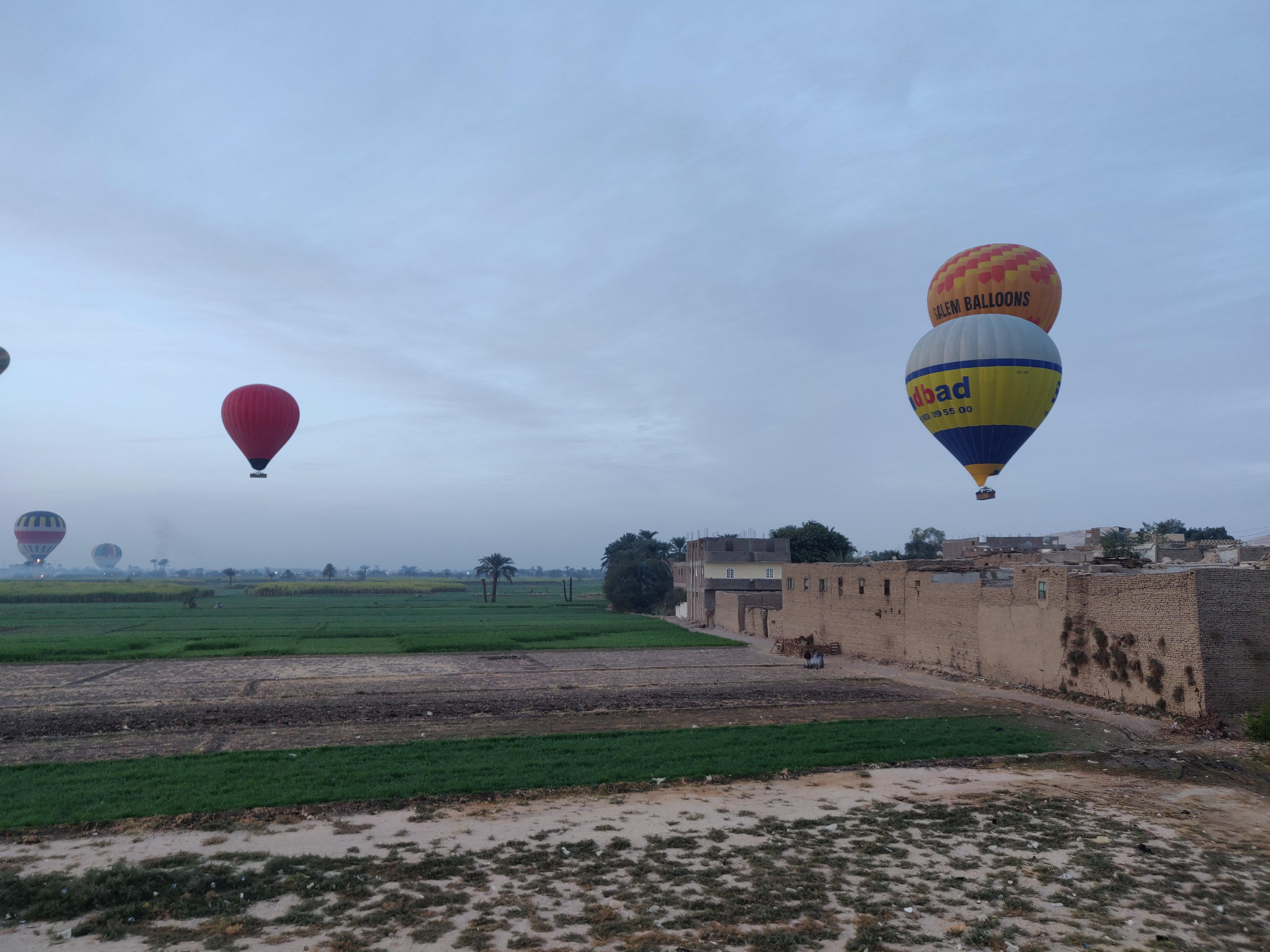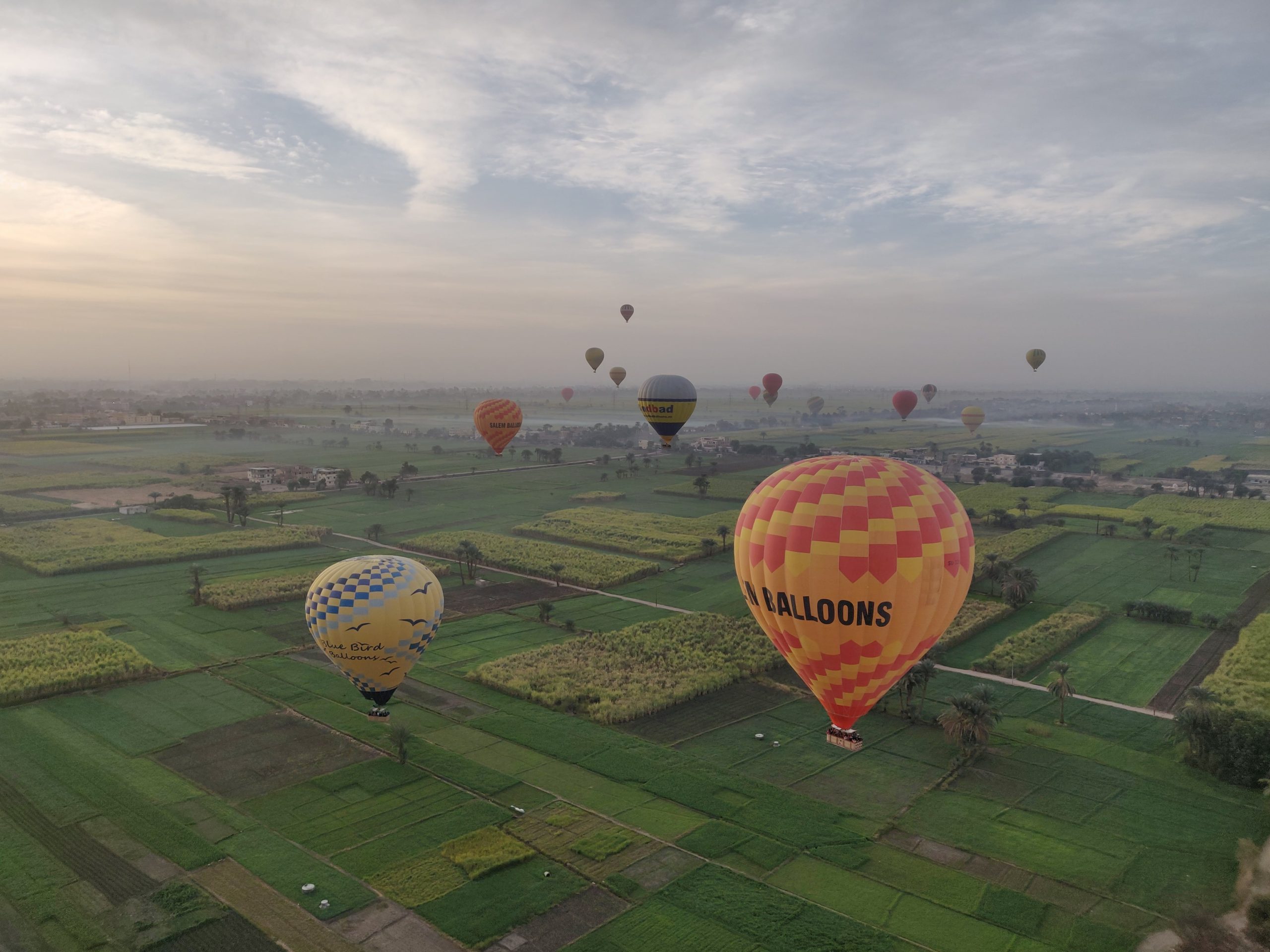Luxor
Luxor serves perfectly for travelers who want to dwell in the culture. It’s like an open-air museum to get yourself involved in the ancient world charm. It is divided between the 2 areas – East Bank and the West Bank which symbolized life & death in ancient Egyptian times.
East Bank is more of a modern city with a lush green environment and traditional bazaars with 2 major temples (Luxor & Karnak Temples) while West Bank is famed for its beauty of temples and tombs (valley of Kings & Queens).
East Bank boasts an exceptional hotel like Old Winter Palace (Under Sofitel brand) – it’s a Victorian-style establishment overlooking the Nile River. It used to be one of the King’s winter palaces and offers modern décor and comfort along with its preserved history. The stunning views, tropical gardens, services offered, and lavish spread meals are worth every penny.
West Bank is also famous for its Hot Air Balloon Rides offering aerial views over the west bank which is a must-do experience for adventure seekers but everyone can enjoy this ride.
-
Destination
Sightseeing
- Luxor Temple
- Karnak Temple
- Valley of the Kings
- Valley of the Queens
- Temple of Hatshepsut
- Colossi of Memnon
- Medinet Habu

It’s a great temple complex to explore during sunset and is dedicated to Amun (Major Egyptian Diety). In ancient Egypt, it was considered the largest and one of the significant religious centres.
The huge pillars of the temple are admiring to watch with your guide explaining to you the history of the temple. It’s a little unique temple amongst others as this Temple Complex has only 2 Pharaohs leaving their mark on this beautiful architectural wonder.
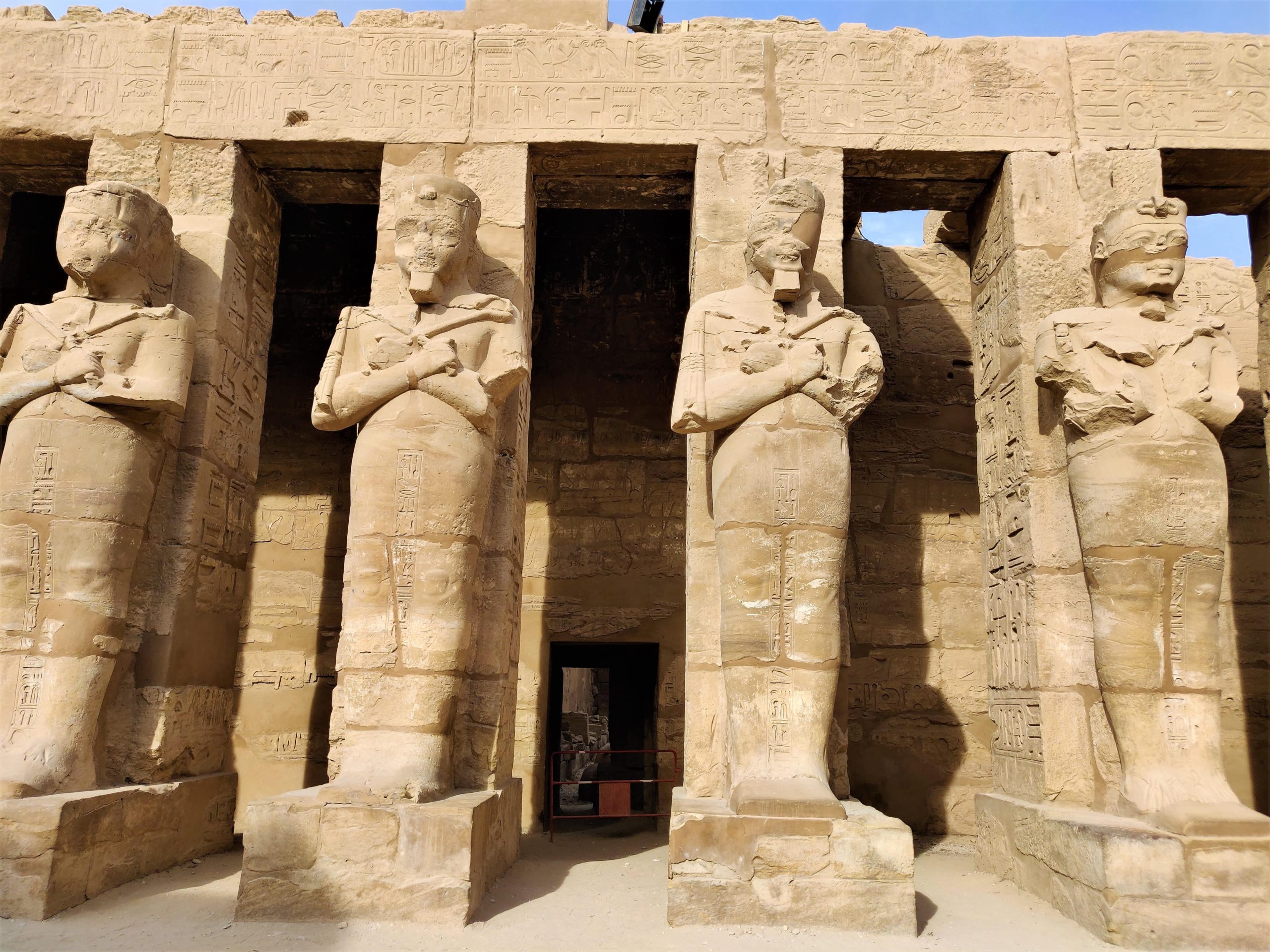
Temple Complex of Karnak is the grandest and mesmerizing of Ancient Egypt’s building projects. This temple was dedicated to the God Amun, his wife Mut & son Khonsu. All the monuments and statues here are gigantic with mighty columns on the pathway.
Every Pharaoh added and amended this building during their reign thereby leaving their prints on the Kingdom’s sacred place. The sound and Light show at Karnak Temples is worth seeing and available in English and other languages as well. Lit Karnak Temples are super soothing to the eyes. This show is extraordinarily beautiful and one can learn its history as well.
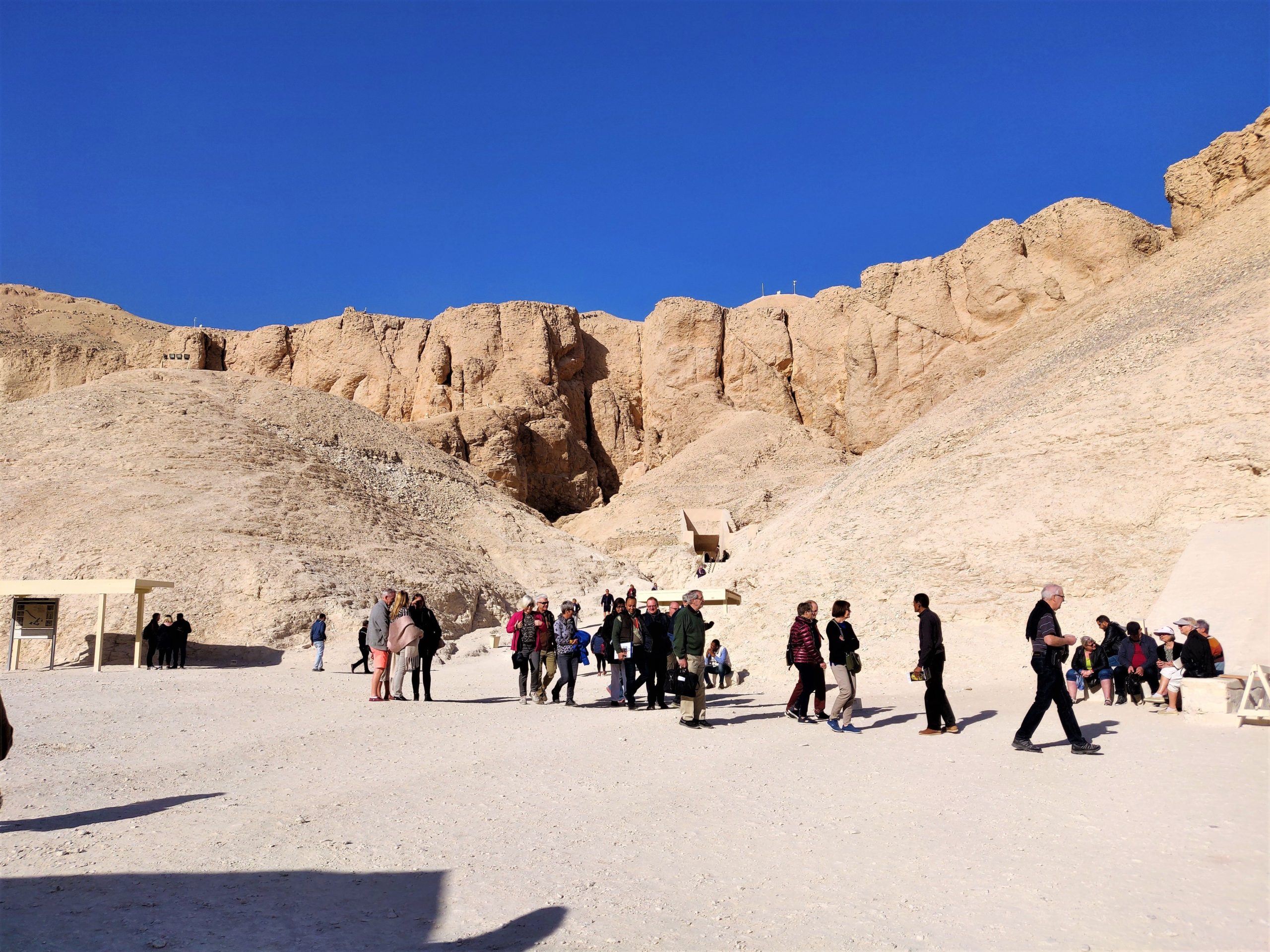
Valley of the Kings is one of the highlights of Egypt’s Trip, with 63 tombs of the famous Kings including King Tutankhamun. It’s an impressive burial ground for the Pharaohs (kings). Their tombs were grand with decorated walls depicting their reign history and filled with treasures.
The only thing is due to its open ground, it’s filled with visitors and the scorching heat which makes it a bit demanding to roam around. The tombs of King Ramses (III, IV, etc) are extremely pretty with colourfully carved and decorated walls along with different chambers leading to the place where they reside.
The Tomb of Tutankhamun is the famous tomb in the Valley of Kings, though it was broken quickly after his burial, still, the rich furnishings are preserved making us wonder about their royal grandeur. The treasures of Tutankhamun are showcased in Egyptian Museum.

Tombs in the Valley of the Queens are usually from the 19th & 20th dynasties. Only 4 tombs are open for public viewing out of 80 tombs that were evacuated and the most beautiful tomb belongs to Queen Nefertari (Wife of Ramses II). Her legendary beauty is portrayed through the decorated walls and ceiling depicting her journey.

This mortuary temple is significant because it resembles Greek architecture and is dedicated to the Queen who ruled like a King. She was one of ancient Egypt's first female Pharaoh. The golden yellow temple is set among desert backdrop along with square pillars and stepped platforms making it one of the masterpieces.
The strategically located temple along the Nile was considered a sacred place and to strengthen her position among the Kings as her statues depict her with a male body including Pharaoh's beard. The look of the temple is just so beautiful with rock cliffs behind that one won’t stop taking numerous pictures. The Queen’s architect Senenmut (her steward) designed it with the statues & sphinxes of the Queen (which are majorly destroyed now).

They are 2 massive sandstone statues depicting Pharaohs in seated positions facing the Nile River with their hands on their knees. They are majorly ruined by the Nile River flooding but still spared. During these times a modern road runs along its ruins making it a mere road attraction but these statues hold great history.
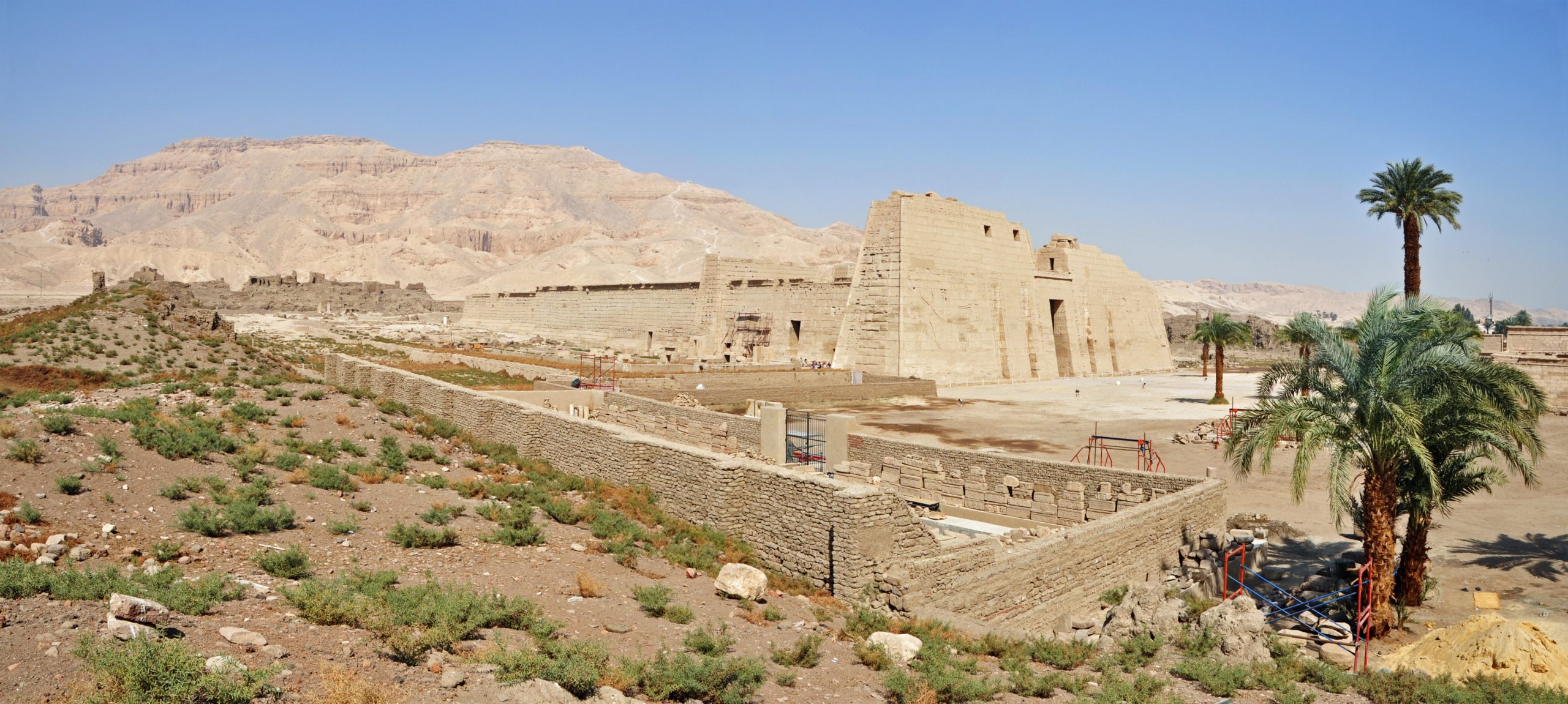
Medinet Habu is the 2nd largest temple complex after Karnak and dedicated to Ramses III which was constructed by Queen Hatshepsut.
The epic and glorious battles are depicted in its reliefs decorated along the walls and ceilings and the local farmers considered this temple to have magical powers.
This temple complex is huge and it isn’t covered with most of the Nile Cruise itineraries so it's best advised to visit this amazing place with a private Luxor tour.










